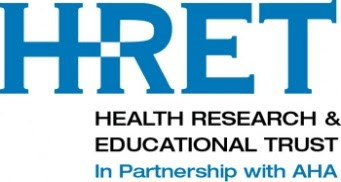
Today, on CDC’s Safe Healthcare Blog, Dr. Carolyn Gould, CDC Team Lead for Hospital Infection Prevention, announces a new initiative between CDC and The Health Research & Educational Trust (HRET) of the American Hospital Association (AHA) to fight infections in hospitals.
The goal of the three-year initiative is to improve the implementation of infection prevention and control efforts in U.S. hospitals. The initiative will identify and engage hospitals with the largest burden of healthcare-associated infections, work with partners to assess the gaps in infection control that might lead to these infections, and implement targeted prevention efforts to have the most impact on reducing infections.
Read more and join the conversation at: http://blogs.cdc.gov/
Press Release: CDC and HRET Join Forces to Protect Patients: http://www.hret.org/news/
CDC and HRET Work Together to Fight Infections in Hospitals
Posted on by
Author: Carolyn Gould, MD, MSCR
CDC Team Lead for Hospital Infection Prevention
CDC Team Lead for Hospital Infection Prevention
On any given day, approximately 1 in 25 hospitalized patients has a healthcare-associated infection, with an estimated 722,000 healthcare-associated infections each year, resulting in 75,000 infection-associated deaths. Ebola infection of two healthcare personnel in the U.S. in 2014 further highlighted the need to improve infection prevention and control in U.S. hospitals.
To this end, the Centers for Disease Control and Prevention (CDC) and the Health Research & Educational Trust (HRET) of the American Hospital Association (AHA) are launching a three-year initiative to improve the implementation of infection prevention and control efforts in U.S. hospitals. This collaborative effort will be conducted in close partnership with state hospitals associations, state health departments, and other key regional and state partners already working diligently to prevent healthcare-associated infections throughout the country.
The work will include identifying and engaging hospitals with the largest burden of healthcare-associated infections, working with partners to assess the gaps in infection control that might lead to these infections, and implementing targeted prevention efforts to have the most impact on reducing infections. Part of the task will include working with experts convened by AHA’s membership group, the American Society for Healthcare Engineering, to recommend improvements to the construction and design of healthcare facilities to enable better infection control practices.
This work will build upon previous work conducted and supported by CDC and other federal agencies to reduce healthcare-associated infections in the U.S. Those efforts have already led to significant decreases in infections, including central line-associated bloodstream infections, surgical site infections, and catheter-associated urinary tract infections. However, much more work is needed to continue to reduce healthcare-associated infections, particularlyClostridium difficile infection as well as often deadly and untreatable multidrug resistant organisms.
CDC works in collaboration with its many partners to reduce healthcare-associated infections. By combining the expertise of CDC and HRET, we can better coordinate and align healthcare-associated infection prevention efforts at both a national and local level, accelerating prevention and improving sustainability of recommended prevention practices. This is a unique opportunity to make a difference in preventing infections and improving patient safety across the nation.
Posted on by






















.png)








No hay comentarios:
Publicar un comentario